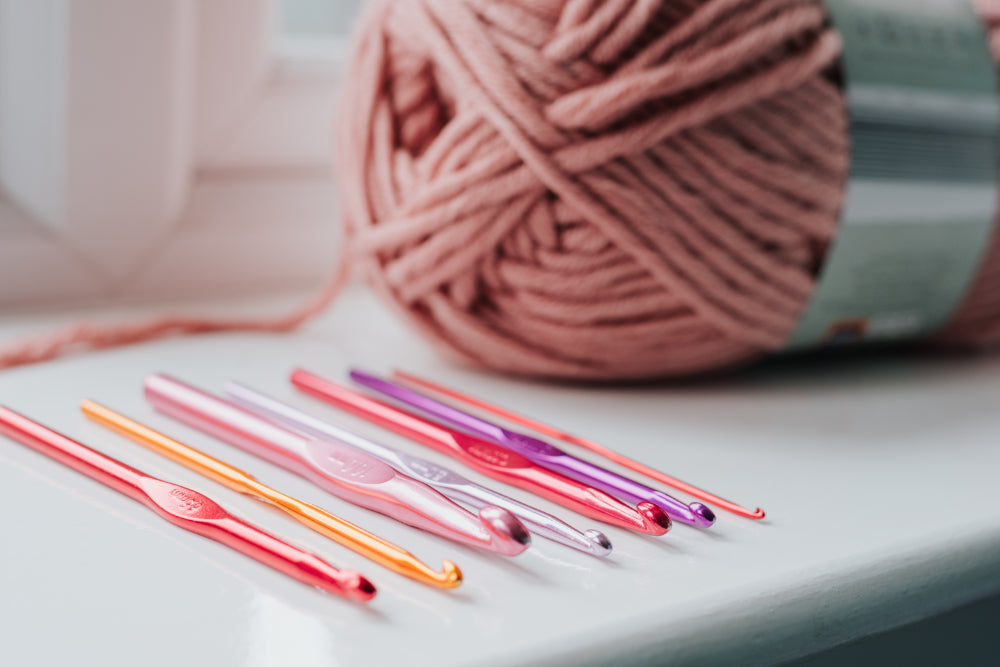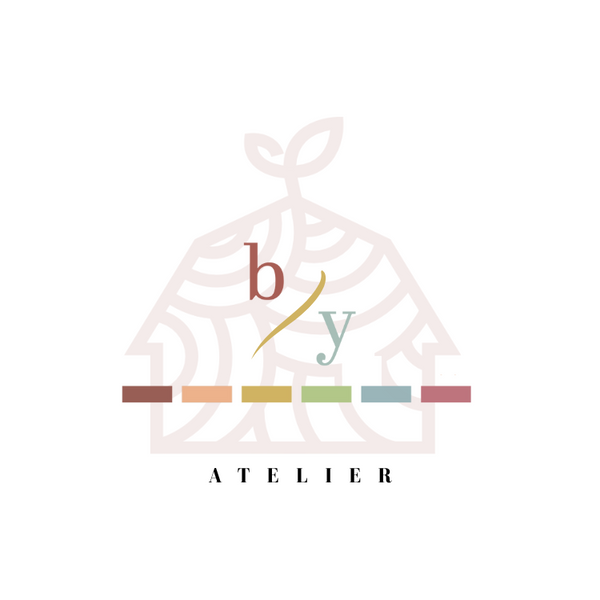
Needles and Hooks - Just Twist it With the Pointy End!
Share
I remember going into the yarn shops with my Mom when I was young thinking, “What is all this stuff for? Why are there so many kinds of needles? Why are there so many different hooks?”
Why? Indeed!
Needles and hooks come in a variety of sizes, are made of a variety of materials and are designed in all kinds of ways to fit all kinds of needs. Let’s take a look at all of these features starting with size.
Simply put, you choose needles and hooks of a particular size to make a stitch of a particular size. No surprises there.
To determine the best size for your project it is best to start with the size recommended in your pattern. Make a gauge swatch and if you make the recommended number of stitches per inch then you are good to go. If not, the gauge will help you determine if you need to adjust your needle or hook size. For instance, if you have too many stitches in your gauge, use a larger needle or hook to cut back on the number of stitches per inch. If you have too few stitches, then go with a smaller size to add stitches. And that’s about all there is to it.
It’s okay if you do need to go with a size other than what is given in your pattern as long as you are producing the gauge stated in the pattern. Remember, gauge is the measure that is going to ensure your fine handiwork turns out the way you expected. In other words, your sweater will fit you and not the Jolly Green Giant.
There's a huge array of sizes available in two different scales; metric and U.S. Metric needle sizes are numerical from smallest, ie: 1.5mm, to largest, ie: 35mm. U.S. sizes range from smallest to largest beginning with 000 and going up from there. For hooks, the metric system is pretty much the same as it is for needles. U.S hook sizing is alphanumeric starting with the small end of the spectrum, ie: B-1, and going up to T/X on the large end. Differences from one size to the next can be as small as 0.25mm. Yes, even that tiny a difference makes a difference. Oh, and by the way, you will likely always need a size you don’t already own! Ha! That just seems to be the rule of this game we play!
Now let’s consider material. Needles and hooks come in bamboo, wood, metal and plastic varieties. As with anything, each of these materials have their pros and cons. In the end, it may just come down to personal preference, but some materials do perform better in certain situations.
Take bamboo, for instance. This material is a great, lightweight option that is strong, durable and quiet to use. Comfortable, too, because they don’t get cold. The surface of the needles offer some friction, though, making them less slippery than, say, metal. Which is great when working with a very sleek yarn like silk, but can be bothersome with other fibers. That friction can also be helpful to someone who is just learning because they will be less likely to have stitches slide off as they are trying to learn how to hold everything. Also, bamboo can flex but that shouldn’t cause any issues with your stitch work.
Then there’s wood. Wood is pretty similar to working with bamboo. Unfortunately, though, it can tend to split.
Metal, usually steel or aluminum, is very sleek and stitches slide with ease! This can be a problem for the new knitter and crocheter, but many like the speed that working with metal offers. Knitters will find that metal needles are noisier than bamboo and wood – I just think of it as music!
Plastic is another option out there. They do have the potential to snag yarn if they are cracked so you may have to inspect their surface before use. Like bamboo and wood, they material is warm and comfortable to hold.
There are some more exotic options, too, like bone, pearl, glass…the list goes on. There is not one material that is better than another, it really comes down to preference. Try out different materials for yourself to find your favorite!
In terms of design, goodness, there are a lot of designs out there. For crochet hooks, the design can mean the hook end itself is rounded or flattened. Like material, choosing the best one is a personal preference. There are a variety of handle options, too. Some have a padded grip or even a light! Again, personal preference is the ticket here.
Knitting needles have varying lengths to accommodate all different project sizes. For instance, if you are working on a bedspread you might need a longer needle than you would for a scarf. There are a number of different types of needles that can be used to make specific types of items, too.
Circular: circular needles are two needles connected by a cable used for making bigger projects or tubular items.
Double-pointed: double-pointed needles are needles that have a point on each end. These are great for working tubular projects like socks or sleeves. You will often use more than two needles at a time when using these, which is great fun!
Interchangeables: these are circular needles with interchangeable cables. These are designed to be modular allowing you to add and remove cable length as needed, at anytime…even while you are working on your project. This versatile option means you never have to worry about not having enough room for all of your stitches. Like circular and double-pointed needles, interchangeables are great for tubular projects, too.
These are just a few of the major options out there. Truth be told, there are all kinds of niche items all designed to solve a crafter’s problems. How useful they are is a personal call. The bottom line is, there are many, many types of needles and hooks to choose from and there are a number of reasons to go with one or the other. Check out something new and see how you like it. It’s fun to try new things and you never know what fabulous creations will come from it.
Personally, I love my interchangeable sets. I have stainless and bamboo and I cannot choose a favorite between the two. They each have a sharp point rather than rounded, I just tend to split less yarn with a sharper point. Those are my favorites, what’s yours? I’d love to hear!
Until next time, stay well my fiber friend!
XO
Linda
Shop our yarns!
Check out some of our other topics: yarn draft, fibers, gauge, needles, twist, ply and weight
How Much Yarn Do I Need?
Why avocado?
Breaking down your yarn needs
Our origin story
My yarn journey
A Guide to Knitting Needle Types. Retrieved from: https://knitfarious.com/guide-to-knitting-needle-types/
